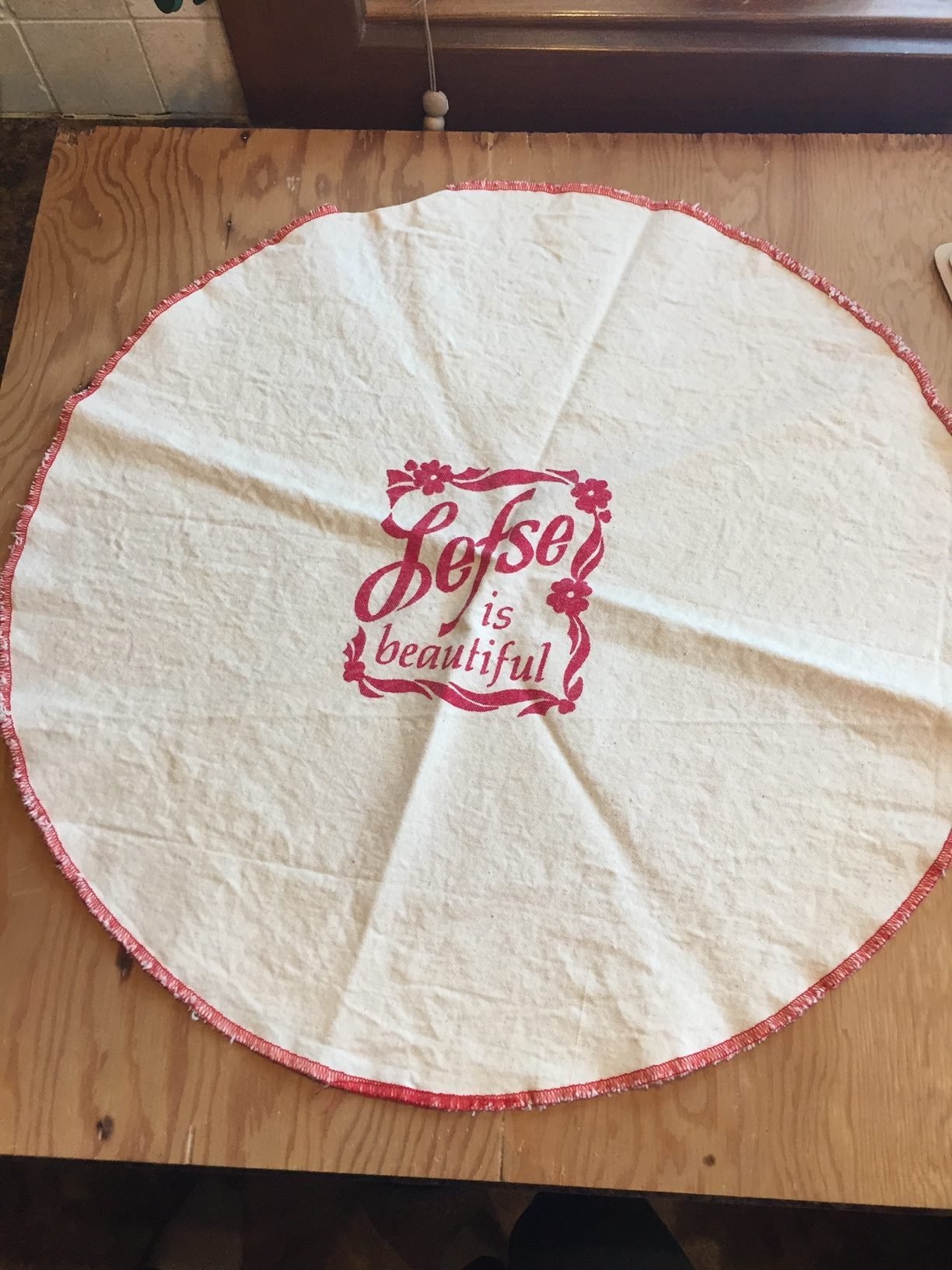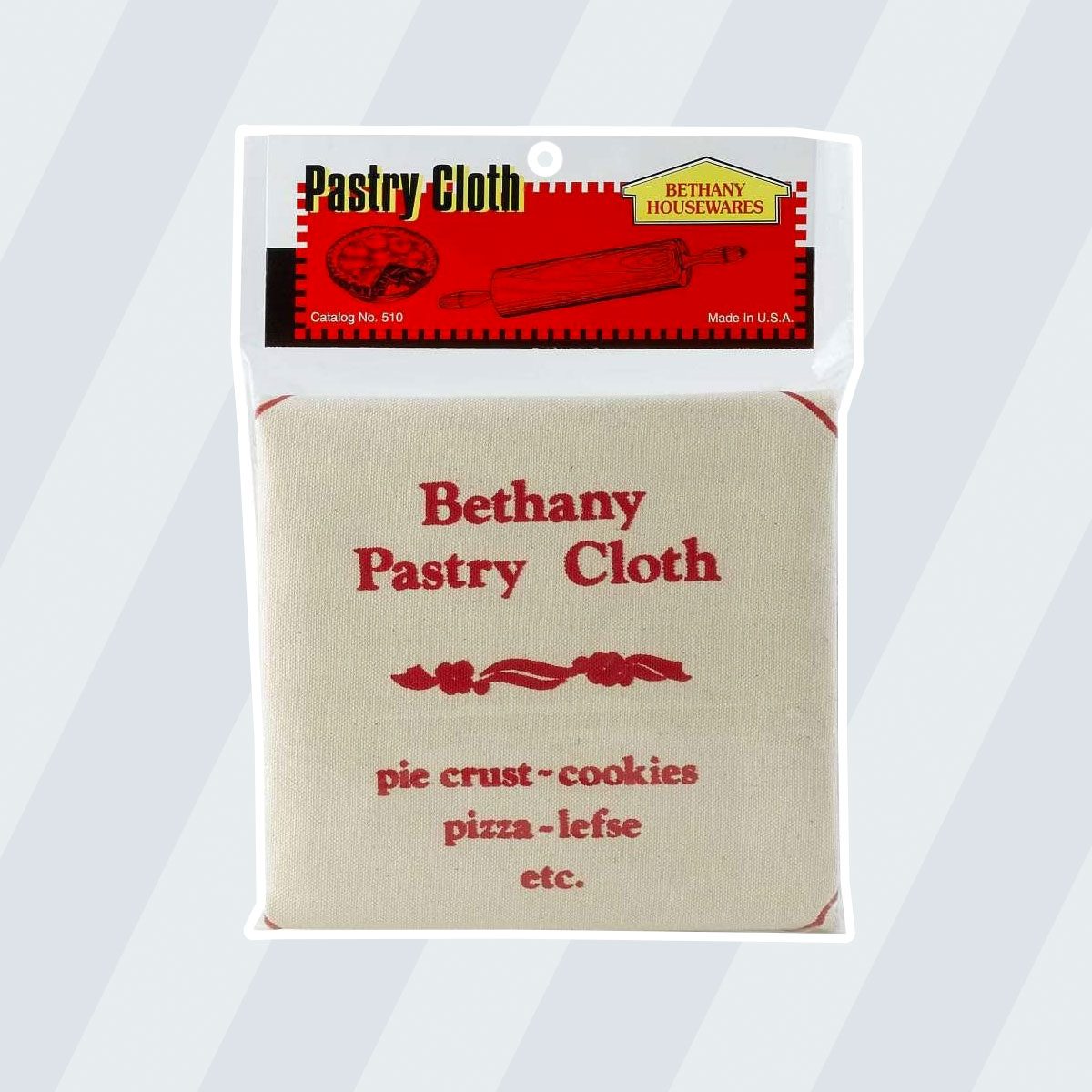I’m a sixth-generation lefse maker. In the 1880s, my great-great-grandmother, Kari Brandum, brought our family lefse recipe with her from the Lillehammer region of Norway when she immigrated to Central Wisconsin—where most of my family still lives. We’ve been making lefse, and then eating it on Christmas Eve, Kari’s way ever since. (Here are more Christmas traditions you’ve probably never heard of.)
What is lefse?

Lefse is a Norwegian flatbread made with a few humble ingredients: potatoes, flour, salt and butter. Historically, potatoes first appeared in Norway around 250 years ago, and it’s likely that’s when Norwegian homesteaders started to make lefse in bulk as a tasty carbohydrate.
I grew up eating lefse after Lutheran church services on Christmas Eve at my Grandma Kathy’s (that would be Kari’s great-granddaughter) house. As a kid, I liked eating lefse but I didn’t think much about it. It was just one of those Scandinavian cultural things that regularly popped up. Much like dancing polka at weddings, rosette cookies and relatives proclaiming “uff-da!”
That changed last year, when I was feeling curious about my Scandinavian heritage. I asked my Uncle Paul (Kathy’s youngest son) to teach me to make the flatbread. Paul, a 57-year-old retired fire chief, is the current resident lefse maker in my family and he supplies the Christmas Eve treat for our extended family of 40 plus people.
How to Make Lefse
Even though lefse recipes always include potatoes, fat, salt and flour—there are a lot of ways to make lefse. This is the way my family has been making it since at least the 1800s. We think it’s pretty good (especially when you spread butter and cranberries on top).
Yield: about nine pieces of lefse
Ingredients
- 3 cups of riced potatoes (cook and rice the potatoes ahead of time, let cool)
- 1 cup all-purpose flour, plus additional flour for rolling
- 1 tablespoon butter, softened
- 1/2 teaspoon salt
Tools needed to make lefse
Though lefse looks and tastes simple, it requires some specific equipment to make it. My Uncle Paul inherited the beloved Brandum lefse recipe, lefse iron, lefse rolling pin and lefse turning sticks. And I must add, he seems to have inherited lefse in his very DNA because he makes the whole process look easy. He says, “A lot of lefse recipes use mashed potatoes, or add sugar. But that’s not how our family makes it.”
Lefse rolling pin: I learned to make lefse using my family’s version of an heirloom: a beloved and broken lefse rolling pin. You might be able to use a regular rolling pin, but the etched squares on a lefse rolling pin allow for required texture in the dough.
Lefse turning stick: If you’re going to buy just one thing to make lefse at home, make it a lefse turning stick. It was designed to cleanly transfer rolled out dough from the pastry board to the griddle. Then you can use the sticks for flipping and folding your lefse, just like a Norwegian.
Lefse iron or griddle: My mom told me that her Grandma Clara used to make lefse on a wood-burning stove. If you’re feeling off-the-grid and authentic, you can go that route! But we use an electric lefse griddle, a lot like this one. (Don’t tell great-great-grandma Kari.)
Potato ricer: Though a lot of Norwegian families simply use leftover mashed potatoes in their lefse dough, ricing the potatoes is key to making traditional lefse like my family does. I think it’s the hardest part, since it requires a little manual labor. OXO’s potato ricer makes the job easier.
Pastry cloth: A pastry cloth helps prevent sticking as you roll out the lefse dough. Using a circular pastry cloth also allows for a guide as you attempt to roll the dough in a circle.
Directions
Step 1: Make the Dough
On lefse-making day, Uncle Paul arrived at my mom’s house with all the equipment, a pot of freshly riced potatoes and 15 years worth of lefse making tips. Arguably, ricing the potatoes is the hardest job. Since that was done, we simply combined the riced potatoes, butter, salt and flour to form a dough. You should work the ingredients by hand until well combined. Add more flour as needed, the dough should not stick to your hands. (Pie-makers should have an easy time of getting the consistency right.)
Step 2: Roll out the dough
Next, we measured out 1/3 cup of dough and rolled it out very thin on a circular pastry cloth set on top of a large cutting board. Here’s where the lefse sticks came in. I assumed they were just decorative and kitschy, but I was wrong. Rolled out lefse dough is so thin, it’s almost impossible to transfer it from the pastry cloth to the lefse griddle without tearing it. To keep it in tact, we slid the two lefse sticks under the dough and slowly dropped it on to the hot griddle.
Step 3: Cook lefse on the griddle
The dough wasn’t a perfect circle and it slightly overlapped. We straightened it with the sticks and let it cook until brown flecks appeared. Then we used the sticks again to fold the cooked lefse in fourths, and set it aside. We repeated the process until we used all the dough.
Store just-cooked and folded lefse in a stack under a towel (or in this adorable lefse cozy) to help keep them moist until served.
Lefse-Making Tips
- Handmade lefse is rarely perfectly round! It’s more important that the rolled dough is thin and even. Aim for a football shape and you should be fine.
- Be sure to flour the rolling pin before you roll out the dough, or the dough will stick to the rolling pin.
- Ricing the potatoes makes them light. To do: Peel and slice three large Russet potatoes, cover with water and bring to a boil. Reduce heat, cover and let cook for 20 minutes or until tender. Drain and mash them with a potato ricer.
- Lefse can be served with peanut butter, cinnamon and sugar or savory toppings like deli meat and cheese. Lutefisk (that would be dried whitefish soaked in lye, then boiled) is only for the very brave or the very Norwegian! Uff-da!
How was my first lefse making experience? I loved it. It was a cozy and fun winter project with deliciously edible results. As I worked and rolled the dough, I enjoyed listening to my mom and Paul talk about eating lefse when they were kids. I learned a lot about our family tree, and my Norwegian heritage. Paul said, “You’re a natural.” He better watch out, though—I want his hand-carved lefse sticks for my own kitchen.
The post Lefse: My Midwestern Norwegian Family’s Christmas Eve Tradition appeared first on Taste of Home.
Megan Wood




